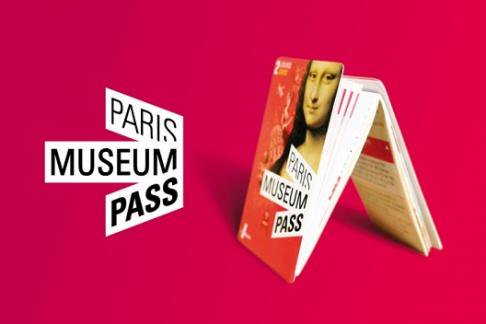Libre
Soutien

Chocolate Kingdom, the Factory Adventure Tour, is an interactive journey that uncovers how chocolate transforms from the bean into the creamy, dreamy chocolate bar. Our Personal Chocolate Tour Guide joins forces with a handsome Prince and his Dragon sidekick to take guests through a Cacao Tree Greenhouse, a one-of-a-kind Chocolate Museum, a Mystical River of Chocolate and a Micro Batch Bean-to-the-Bar Factory utilizing old world machinery.
With an opportunity to customize your own chocolate bar for an additional cost, Chocolate Kingdom is the most unique chocolate experience in North America and will inspire and amaze chocoholics of all ages.
Highlights
See a one-of-a-kind Chocolate Museum.
Learn how chocolate is made.
Fun for chocoholics of all ages.
Taste some melt in your mouth chocolate.
Inclusions
Admission to a Factory tour of Chocolate Kingdom
Tours last approximately 45 minutes.
Encontrando Hobbiton! En 1998, el equipo encargado de la localización de Sir Peter Jackson estaba buscando las icónicas colinas y exuberantes pastos verdes de Hobbiton™. Una búsqueda aérea los llevó a la granja Alexander, una impresionante granja de ovejas de 506 hectáreas en el corazón de Waikato. En una parte particular de la granja, un magnífico pino se alzaba sobre un lago cercano, adyacente a una colina ascendente. Bag End ahora se encuentra en lo alto de esa colina, con vista al Árbol de la Fiesta, como se conocería más tarde a ese pino. Las áreas circundantes estaban intactas; No hay líneas eléctricas, ni edificios ni carreteras a la vista. Esto significaba que Sir Peter Jackson podía dejar atrás el siglo XX y sumergirse completamente en el mundo de fantasía de la Tierra Media™. En marzo de 1999, el equipo comenzó hacer realidad las ideas de Hobbiton; el Ejército de Nueva Zelanda proporcionó ayuda, y pronto se dispersaron 39 Hobbit Holes™ temporales en la parcela de 5 hectáreas utilizada para el set. El secreto era clave, y la compañía de producción implementó estrictas medidas de seguridad durante la construcción y el rodaje. El rodaje comenzó en diciembre de 1999, y tardó alrededor de tres meses en obtener una envoltura de The Shire. Después de un intento inicial de demolición, quedaron 17 fachadas de contrachapado. Estas servirían como catalizador que impulsó a Hobbiton hacia el ojo público, con visitas guiadas a partir del 2002. En 2009, Sir Peter Jackson volvió a filmar la trilogía de El Hobbit, y dejó atrás el hermoso set de películas que hay actualmente; 44 agujeros de Hobbit reconstruidos permanentemente, con el mismo detalle fantástico que se ve en las películas. En 2012, la Taberna Green Dragon™ se inauguró como el final del viaje. Los visitantes ahora terminan su experiencia en el set de películas Hobbiton con una refrescante bebida de la gama Hobbit™ Southfarthing™.
Súbete al tour nocturno de City Sightseeing de Lima en Larcomar y prepárate para tomar las fotos más inolvidables de la serenidad de Lima bajo la luna. Esta excursión también te llevara al Circuito Mágico del Agua, el complejo de fuentes más grande del mundo, certificado por el Libro Guinnes. Este circuito incluye trece fuentes ornamentales, donde las aguas danzan de la mano de luces multicolores y al ritmo de la música ¡Esta es una experiencia imperdible en Lima! En el circuito, podrás apreciar la Fuente Mágica, con un salto de agua que alcanza los ochenta metros de altura; la Fuente de Fantasía, La Fuente de la Ilusión, la Fuente de la Cúpula Visitable, la Fuente de la Armonía, la Fuente del Arco Iris y muchas otras increíbles y llamativas estructuras. Disfruta del viaje a medida que pasamos por los más impresionantes emblemas históricos iluminados en la oscuridad. Algunas de las atracciones más conocidas son la Plaza Grau, la Plaza San Martin, el Palacio de Justicia y el Convento de San Francisco. ¿Estás listo para vivir tu experiencia en Lima desde una perspectiva completamente diferente? ¡Te esperamos!
Michael Jackson has touched millions with his timeless music. And now you can experience it in an all-new way with Michael Jackson ONE by Cirque du Soleil
Important Information Open from 10:00 to 17:00. Last admission is 16:00 Duration approx. 90 mins Please be advised that narrow heels cannot be worn onboard. Address: Alexandra Dock, Queens Rd, Belfast BT3 9DT Voucher to be exchanged at the above address. Not valid for special ticketed events. HMS Caroline is closed on 24, 25 and 26 December.
